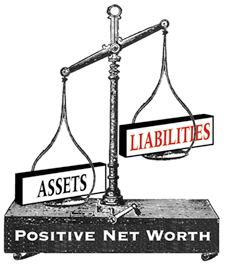Many people don’t know the difference between asset and liability, and as a result, most of those people struggle financially. Basically, an asset is something that is going to add money to your bank account or pocket, and a liability is something that’s going to take the money from your bank account or pocket.

When some people buy a car or a house, they think this thing is an asset. However, it’s usually a liability. If you buy a car and the car has a certain value, the value will go down the day you take it out from the dealership. There also are expenses related to the car that you are going to pay for over time, such as service, going through the car wash, insurance, and parking fees. A car basically is a liability because it’s taking money from your pocket.
The same thing with a house. So many people think when they buy a house that they’re going to make money or at least the house will keep its value, but the reality is that you are paying a mortgage, interest on the mortgage, maintenance for the house, insurance, and taxes in some countries. Sometimes the house’s value will decline because of the economy. A house is liability, unless you know what are doing as an investor. If you wish to invest in a house, you need to work out a formula to see if it will make money for you in order to consider it as an asset. Otherwise, if the money is negative, it’s a liability.
But if the money is in a positive trend, then yes, it is an asset. An asset always puts money in your pocket, such as when your income as rent from the house is higher than the expenses that you pay for the house. Then your cash flow is positive, and the house is an asset. Another example is in terms of capital gain: If you bought the house at a low rate and sold it later at a higher rate, you made money, so the house is an asset. So in the case of buying a house, it is essential that you study the capital gain and cash flow aspects. My advice is to focus more on the cash flow gain, because it’s continuous and instantaneous.
The same thing applies for your business. When you rent an office or building for your company, it always goes under the liability column, not the asset column, mainly because you are paying money for it, so it’s considered as an expense. However, if your company owns the building or office, then it’s an asset. Some companies put a property in both the asset and liability columns. In this case, they own the office building, so they consider it an asset. They also charge themselves rent to see how much they would be spending in the case that they didn’t own the office. They still add the charge of the rent as income, which helps them calculate their total operations cost.
So to differentiate between an asset and liability, consider whether your pocket or bank account cash is positive or negative.
We all have liabilities, but the point is we need to keep our assets or income rate higher than our liability and expenses. This allows us to use the extra cash to invest in more assets that will generate more income for us. A successful life as investor starts when you’re investing maybe 1–10 percent of your income and use the rest as expenses. Let’s assume that your income is small at the start: $1,000 per month. So you’re investing $100 and spending $900, but with time if you are doing well in your investments and your income jumps to $10,000, then you should not spend $9,000 and invest $1,000. Let’s say that obviously your lifestyle has become better and that costs more money. So at the point of $10,000, if you’re spending $3,000 and investing $7,000, then you’re spending 30 percent of your income and investing 70 percent. Then when you get to the point of $100,000, you should spend $10,000, which is 10 percent of the income, and invest $90,000 (90 percent).
I guess you got the point now; it’s simple, but for most people it’s not easy to implement. The name of the game is investing, but do you have the right skills to win more than you lose? The numbers will give you the answer to that, so make the numbers your friend.
